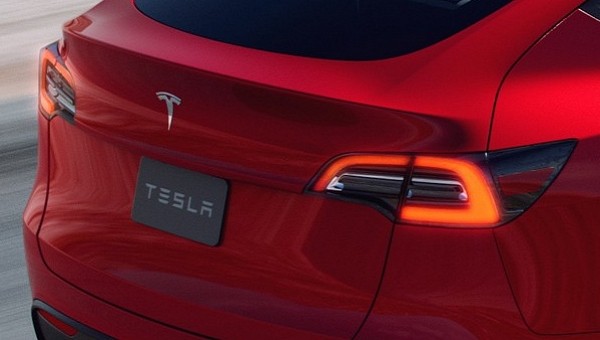Tesla has another recall to tackle in China. This time, it will have to fix almost half a million cars for a flaw with position lights. According to the American EV maker, the problem was caused by a software glitch that will be fixed – I’m sure you must have already guessed – by an over-the-air (OTA) update. That raised several questions, but first things first.
Tesla told the Chinese State Administration for Market Regulation (SAMR) that “during the process of waking up from the parking state, the software of the vehicle's position lights may have an error when initializing internal parameters.” That results “in the position lights on one or both sides of the rear of the vehicle not being able to light up.” Predictably, that “will reduce the visibility of the vehicle, and in extreme cases will increase the risk of vehicle collision accidents, posing safety hazards.” That’s especially true “in a dark environment.”
The American EV maker told SAMR the issue affects 142,277 Model 3s made at Giga Shanghai between December 27, 2020, and November 7, 2022. Ironically, the Model Y has many more units involved in the problem. We’re talking about 292,855 electric crossovers produced between January 1, 2021, and November 11, 2022.
The questions this recall raised refer, first, to how many more vehicles were affected by the glitch. It is very unlikely that the Model 3 and Model Y made in China use different software than that of cars produced in Fremont, Giga Grünheide, or Giga Austin. That said, we may soon hear about other vehicles needing the same software update. Another possibility is that they simply get the update to fix the problem without any notice about the defect.
The second question is how many more issues in Tesla vehicles come from software. As Philip Koopman recently warned, these glitches can come from companies treating all software in a car as a single thing. In the words of the AV safety specialist and computer engineering professor at Carnegie Mellon University, car companies cannot allow the “shiny infotainment system” to interfere with “critical deeply embedded control firmware.” He believes that “cost is pushing companies to mix shiny with critical more than they should.”
If the software is causing Tesla position lights not to work as they should, it is only fair to ask how the EV maker is testing it to ensure safety systems dependent on it do not present similar issues. When you remember Tesla released an advanced driver assistance system (ADAS) in the beta stage to more than 260,000 people (FSD), that answer becomes even more pressing.
The American EV maker told SAMR the issue affects 142,277 Model 3s made at Giga Shanghai between December 27, 2020, and November 7, 2022. Ironically, the Model Y has many more units involved in the problem. We’re talking about 292,855 electric crossovers produced between January 1, 2021, and November 11, 2022.
The questions this recall raised refer, first, to how many more vehicles were affected by the glitch. It is very unlikely that the Model 3 and Model Y made in China use different software than that of cars produced in Fremont, Giga Grünheide, or Giga Austin. That said, we may soon hear about other vehicles needing the same software update. Another possibility is that they simply get the update to fix the problem without any notice about the defect.
The second question is how many more issues in Tesla vehicles come from software. As Philip Koopman recently warned, these glitches can come from companies treating all software in a car as a single thing. In the words of the AV safety specialist and computer engineering professor at Carnegie Mellon University, car companies cannot allow the “shiny infotainment system” to interfere with “critical deeply embedded control firmware.” He believes that “cost is pushing companies to mix shiny with critical more than they should.”
If the software is causing Tesla position lights not to work as they should, it is only fair to ask how the EV maker is testing it to ensure safety systems dependent on it do not present similar issues. When you remember Tesla released an advanced driver assistance system (ADAS) in the beta stage to more than 260,000 people (FSD), that answer becomes even more pressing.








































